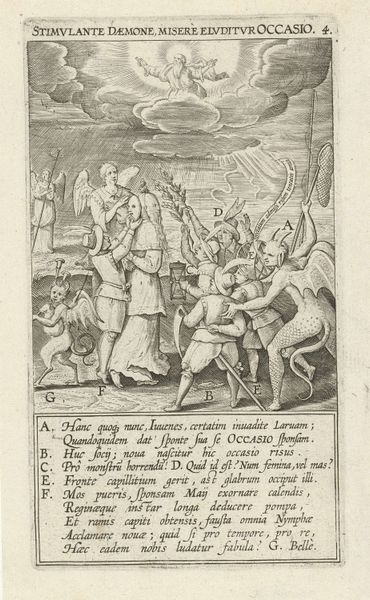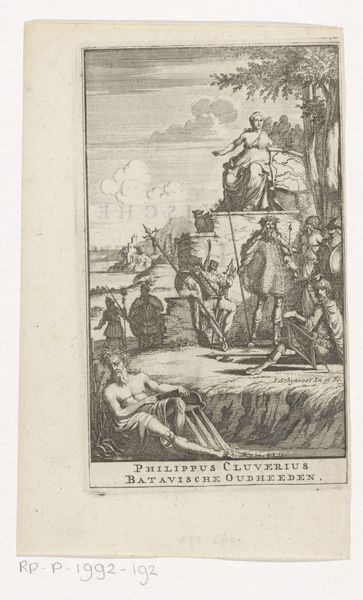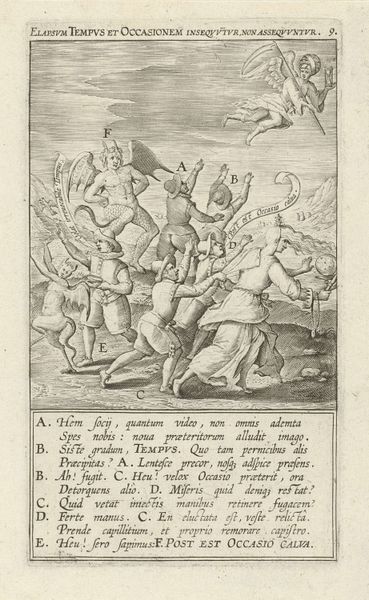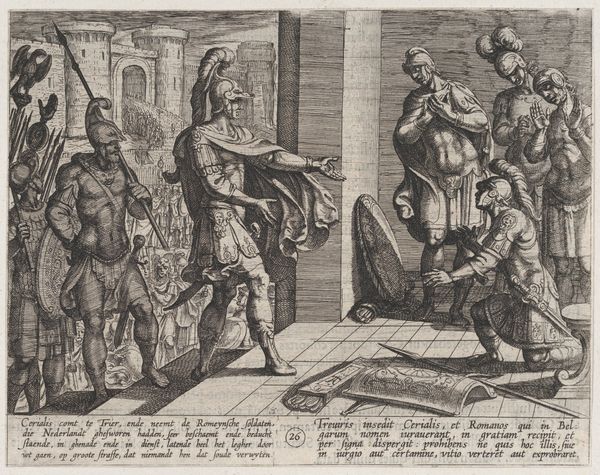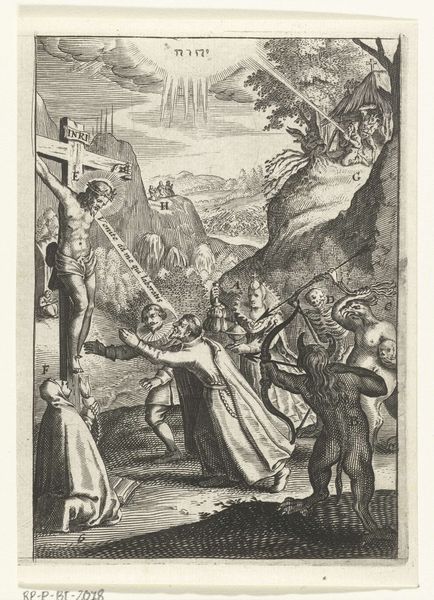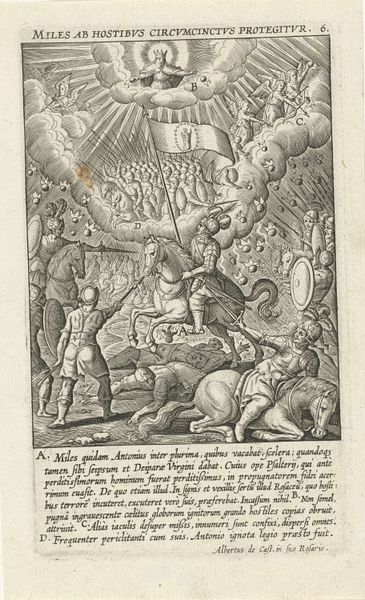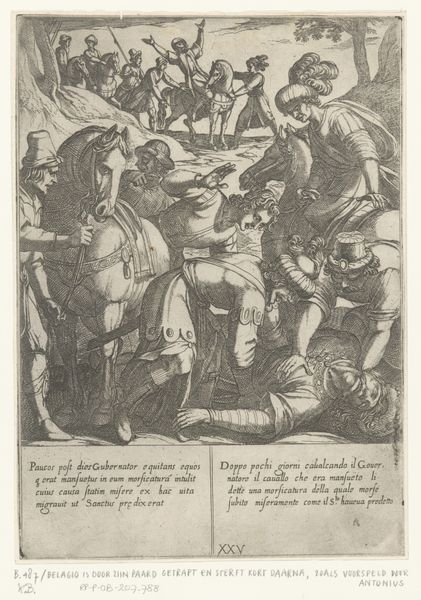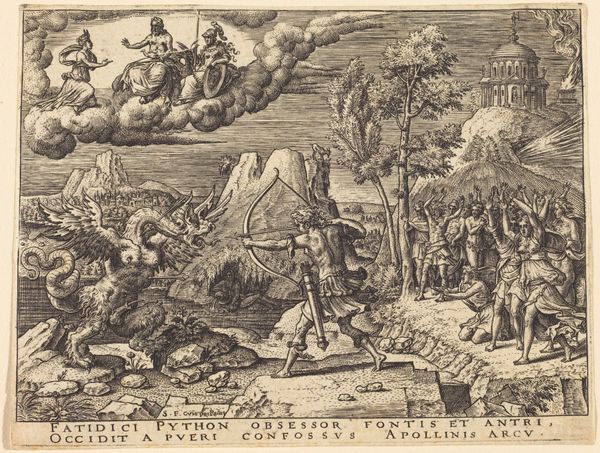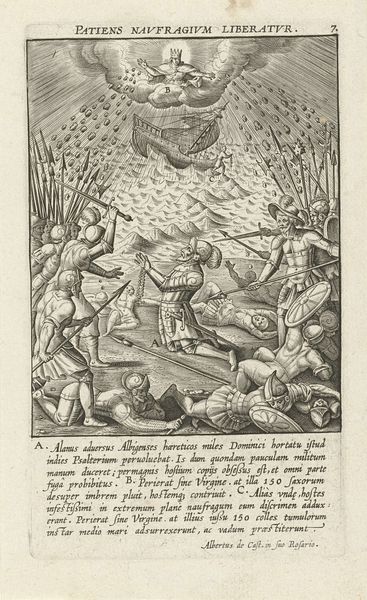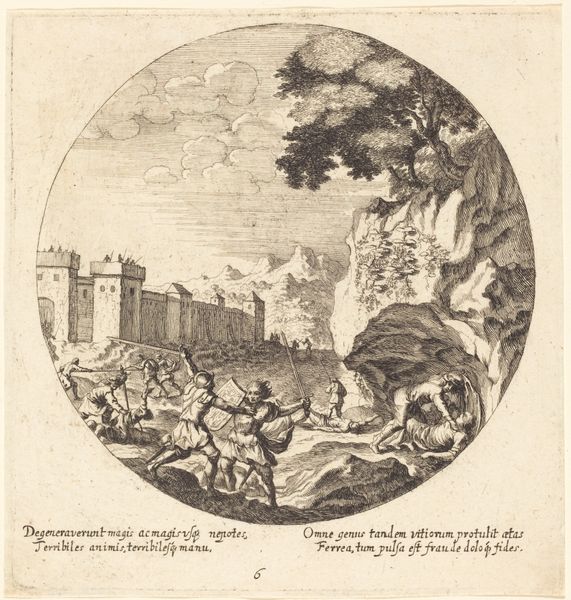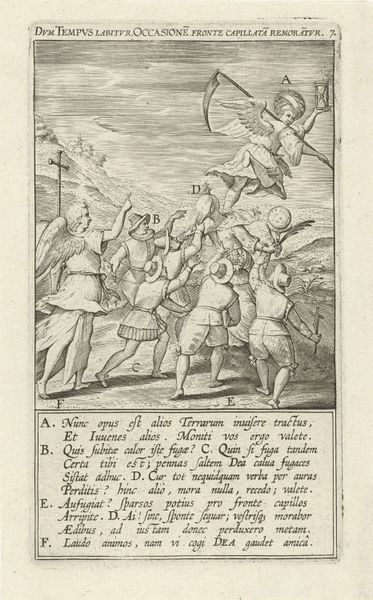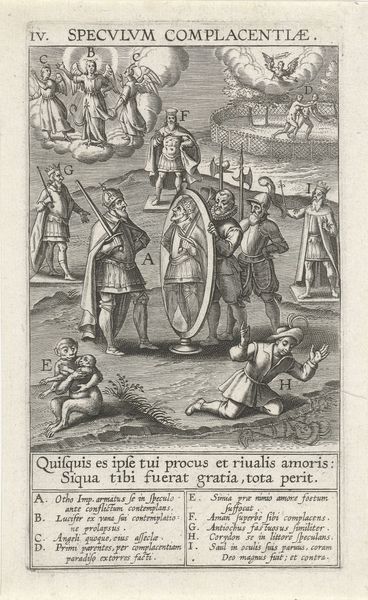
print, etching
#
allegory
#
baroque
# print
#
etching
#
cityscape
#
genre-painting
#
history-painting
Dimensions: height 234 mm, width 178 mm
Copyright: Rijks Museum: Open Domain
Jan de Ridder created this etching, "Rampzalige gevolgen van de actiehandel," in 1720. It reflects a society grappling with the consequences of speculative investment. In the print we see an allegory of the economic turmoil known as the Tulip Mania, a moment of intense financial speculation and subsequent crash in the Dutch Republic. De Ridder captures not just the financial ruin but the broader societal disruption and moral decay that accompanied it. Figures range from the wealthy being carried off in carriages to the destitute and hanged. The naked woman near the tree is an interesting element. She could be Eve, newly expelled from Paradise, but it is more likely that she embodies ‘Truth’ newly exposed to a lie. The emotional resonance of the work lies in its portrayal of human suffering and moral crisis, reflecting how financial instability can unravel the social fabric, leaving individuals vulnerable. It’s a stark reminder of the human cost of unchecked greed and the fragility of economic systems.
Comments
No comments
Be the first to comment and join the conversation on the ultimate creative platform.
